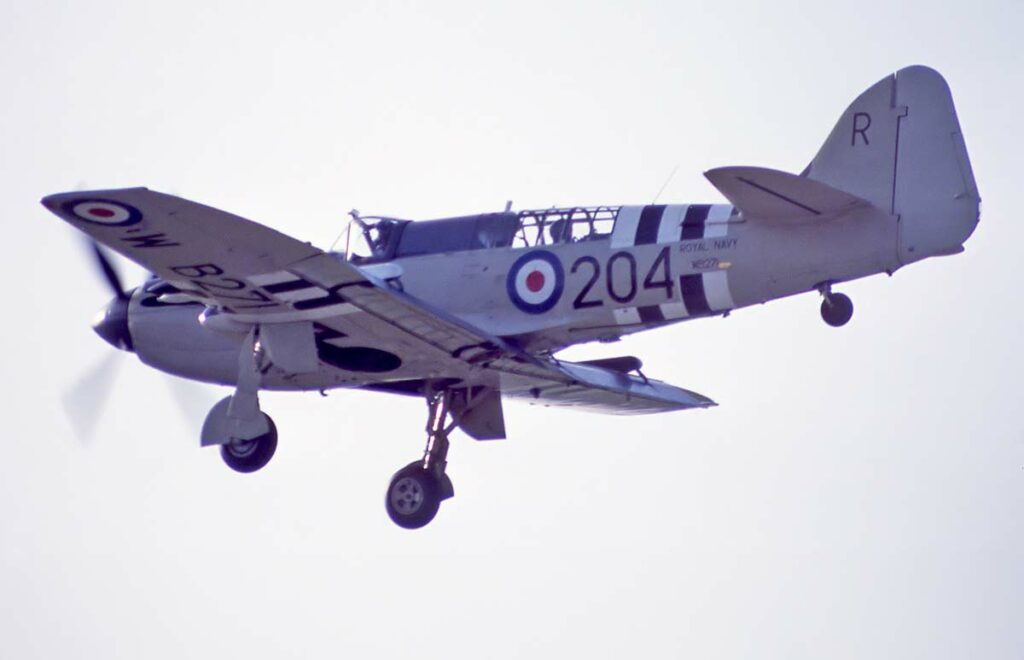The Fairey Firefly, a British carrier-borne fighter-reconnaissance aircraft of WWII, stood out for its versatility and powerful Armstrong Siddeley engine.
The Fairey Firefly was a significant British naval aircraft of World War II and the post-war era, designed primarily for carrier-based operations. It combined the roles of fighter and reconnaissance, showcasing adaptability in various naval air operations.
The Fairey Firefly holds a unique place in the history of naval aviation. As a purpose-built carrier-borne aircraft, it was designed to fulfill multiple roles, a reflection of the evolving needs of the Royal Navy during World War II.
History of the Development of the Fairey Firefly
Developed during a period marked by rapid advancements in military aviation, the Fairey Firefly was a product of the shifting dynamics of World War II. The need for a versatile and powerful carrier-based aircraft was apparent to the British Royal Navy, which sought a platform capable of undertaking both fighter and reconnaissance duties.
The Fairey Aviation Company, known for its earlier contributions to naval aviation, initiated the Firefly program in the early 1940s. The primary objective was to create an aircraft that could operate effectively from aircraft carriers, providing both offensive and defensive capabilities.
The first flight of the Firefly occurred on December 22, 1941. This maiden flight marked the beginning of a series of developments that would see the Firefly evolve into a key asset for the Royal Navy.
The Fairey Firefly does not have a specific NATO nickname, as it was primarily operated before NATO’s establishment in 1949.
Design of the Fairey Firefly
The design of the Fairey Firefly was a blend of innovation and practicality. It featured a two-seat configuration, with the pilot and navigator/observer sitting in tandem. The aircraft was powered by the Armstrong Siddeley Griffon engine, a 37-liter 12-cylinder unit capable of delivering up to 1,730 horsepower (1,290 kW).
Measuring 37 feet 7 inches (11.45 meters) in length with a wingspan of 44 feet 6 inches (13.56 meters), the Firefly had a substantial presence for a carrier-based aircraft. Its design included a retractable landing gear and folding wings, critical for carrier operations.
The Firefly’s design, however, came with certain drawbacks. Its size and weight affected maneuverability, and the two-seat configuration, while advantageous for reconnaissance and coordination, made it less agile compared to single-seat fighters.

Performance of the Fairey Firefly
The Firefly’s performance was marked by a balance between speed, range, and operational versatility. The Griffon engine allowed it to reach a top speed of 316 mph (509 km/h) and a service ceiling of 28,000 feet (8,534 meters). The aircraft had a range of approximately 1,300 miles (2,092 km), enabling extended operations.
When compared to its contemporaries like the American Grumman Hellcat or the Japanese Mitsubishi Zero, the Firefly was not the fastest or most agile. However, its strength lay in its ability to undertake a variety of roles, from reconnaissance to ground attack, making it a valuable asset in a carrier task force.
Military Use and Combat of the Fairey Firefly
Armed with four 20 mm Hispano cannons and provisions for rockets or bombs, the Firefly was well-equipped for its dual role. It first saw combat in 1944 and was involved in several key operations during the latter part of World War II, including attacks on the German battleship Tirpitz.
The Firefly’s versatility was demonstrated in various naval engagements and ground-attack missions. It operated in the Pacific, Atlantic, and Indian Oceans, engaging enemy ships, providing reconnaissance, and supporting ground troops.
Competing against aircraft like the F6F Hellcat and the A6M Zero, the Firefly held its own, especially in strike and reconnaissance missions. Its impact was significant in the contexts it was designed for, rather than dogfighting.
Post-war, the Firefly continued to serve in various navies, including those of Australia, Canada, and the Netherlands. It saw action in the Korean War and remained in service until the advent of jet aircraft, eventually being replaced by more advanced models like the de Havilland Sea Venom.
The Fairey Firefly stands as a testament to the ingenuity and adaptability of British naval aviation during World War II. Its ability to perform multiple roles effectively made it a valuable asset in the Royal Navy’s carrier fleet, leaving a lasting legacy in the annals of military aviation.
Back to the Spy Planes section.